Homelessness
Everyone should count
January 24, 2013
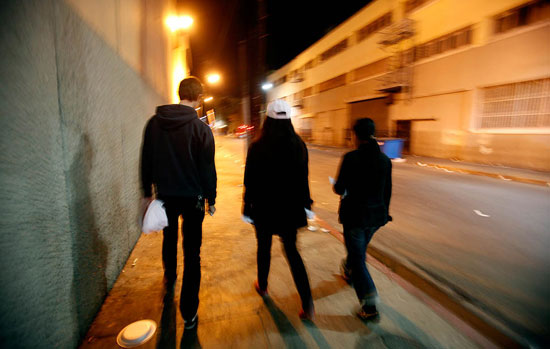
Homeless Count organizers are hoping for an even bigger volunteer turnout than in 2011. Photo/L.A. Times.
For Los Angeles to effectively confront the shame of homelessness, it needs a clear picture of the problem. And the 2013 Greater Los Angeles Homeless Count—the largest of its kind in the country—is preparing to undertake its most ambitious effort yet to bring the issue into sharper focus—hopefully, with your help.
“We have three thousand volunteers so far, and we’re trying to get to five thousand,” said Mark Silverbush, policy and planning analyst for the Los Angeles Homeless Services Authority, which organizes the count and coordinates regional efforts to assist the homeless. “We will have more data available than ever before.”
Silverbush said that more than 70 cities and 20 communities are joining the effort
Volunteers aged 18 and older can sign up online to participate in the count throughout L.A. County, except in the cities of Glendale, Pasadena and Long Beach, which are doing their own independent tallies. By car and by foot, teams of 3 or 4 counters will fan out to assigned areas to count homeless individuals, as well as tents and vehicles in which people appear to be sleeping. Friends can group together. The process takes about 4 to 5 hours, including the pre-count training.
Most counts take place at night when people are bedding down, which makes it easier to identify who is homeless, Silverbush said. Volunteers are instructed to keep a respectful distance and not engage the homeless population.
Homeless counts are required by the U.S. Department of Housing and Urban Development. The collected information is required to obtain federal monies to combat homelessness and is used to apply for other government funding.
“There are a lot of agencies and organizations and we all have anecdotes about the work we are doing, but it really helps to have these statistics,” Silverbush explained. “This is our once-in-every-two-years opportunity to refresh that data and make a difference in people’s lives.”
The count will take place during the course of three days. On Tuesday, January 29, volunteers will count in the San Gabriel Valley and East L.A. On Wednesday, January 30, they’ll head to West L.A. and the South Bay region. Finally, on Thursday, January 31, counters will canvass the Antelope Valley during the day and then, at night, move to the San Fernando Valley, Santa Clarita Valley, Downtown L.A. and South L.A.
This week, agencies that focus on youth homelessness undertook a countywide count of unaccompanied minors and transition-aged homeless youth between 18 and 24. Agency staffers recruited homeless and formerly homeless youths to help identify young people living on the streets. They also sought information about the population’s sexuality and how many came from foster care.
“The housing barriers that homeless youth face seem to be different,” Silverbush said. “We are looking at the research to figure out what the best interventions are. There are a lot of ideas out there, but not a lot of off-the-shelf ideas that we can really plug in and use.”
In February, advocates plan to undertake a separate survey of the adult population to collect further demographic data. They’ll use a matrix developed for the “housing first” program Project 50 to identify the most vulnerable homeless individuals, or those most likely to die on the streets.
Looking for a snail mail alternative
March 6, 2012

Just a few of the million-plus pieces of mail that the DPSS must, under federal regulations, mail to itself each year.
It may sound like a bureaucratic absurdity straight out of Dilbert: Los Angeles County’s Department of Public Social Services is paying hundreds of thousands of dollars to send itself more than a million pieces of mail each year.
But the reality is no laughing matter.
Federal regulations require the department to communicate with all recipients of CalFresh benefits (formerly known as food stamps) by means of paper mail.
Many homeless recipients list the department’s address as their own so that they may receive benefits. But often, they pick up their mail irregularly, if at all. And that has created mail backlogs and service delays at DPSS offices. The department estimates it spent at least $390,000 on such mailings last year.
So this week, the Board of Supervisors, acting on a motion by Supervisor Don Knabe, directed the Chief Executive Office and DPSS to explore whether there’s a legislative way around the regulations. The motion did not specify a timeframe for coming up with such a strategy.
If allowed to do so, DPSS proposes changing to a system in which people using the department’s address would receive electronic mail which they could access or have printed out for them at DPSS offices.
But altering the system could have some unintended consequences. Christine Khalili-Borna of the Public Counsel Law Center said creating email accounts could raise privacy concerns and might also make it harder for other county agencies, including Public Health, to reach homeless clients.
“This proposed motion might be a good option for those individuals who have the skills, ability and access to email,” Khalili-Borna said. “However, a large number of homeless participants—especially the most vulnerable, including those with mental health, developmental and literacy issues—do not have the skills or means necessary to access this crucial information.”
She said her organization would be willing to work with the county as it explores ways to change the current system. Her offer was accepted.
Posted 3/6/12
From this day forward
November 23, 2011
This is not a fairytale love story.
Over the course of 23 years together, Denny Lyons and Terrie Madrid have lived in an improvised lean-to on a deserted restaurant patio. They’ve had—and lost touch with—a now-teenaged daughter and son. They’ve battled illness, unemployment, substance abuse.
In short, this chronically homeless pair has lived on the bleak side of “for richer and poorer, in sickness and in health” in a way most couples can’t begin to imagine.
But now, after more than two decades of bad choices and bad breaks—and with a big assist from an initiative called Project 60—they just took a step in a new direction.
They got married.
Their wedding, celebrated Friday on the beach in Santa Monica and captured in the video above, clears the way for them to live together in their own apartment under a recently-issued federal housing voucher.
Beyond that important practical benefit, the ceremony also marked something of an emotional milestone—a tribute to staying together against long odds.
“It’s time,” said Lyons, 58. “She stood by me through thick and thin. It’s been real hard on her.”
Or, as the V.A. chaplain who performed the wedding put it: “This is a good example of love in action.”
Things started looking up for the couple about 11 months ago, when they entered the Santa Monica shelter called Samoshel, run by the Ocean Park Community Center. For now, and until they get their own apartment, they bunk down every night in separate men’s and women’s sleeping facilities. But they were able to bring their little dog, Bambi, with them into the shelter—a crucial point as they debated whether to come in off the streets last winter.
Progress has accelerated in recent weeks with Lyons’ admittance into Project 60. The initiative is devoted to finding what’s known as permanent supportive housing for homeless veterans like Lyons, who served in the Navy Reserve. It’s a spinoff of the better-known Project 50, which has targeted some of the most chronic cases on downtown Los Angeles’ Skid Row with a holistic approach to housing, health care, mental health and substance abuse treatment. It’s estimated that 7,000 veterans are now homeless on Los Angeles County streets. Project 60 aims to help some of the most vulnerable among them, like Lyons, through a partnership of the West Los Angeles V.A., Los Angeles County and other government and nonprofit agencies.
Lyons is now receiving veterans’ benefits. He has been granted probation for what he described as old drug warrants that had him “living the life of a fugitive, more or less.” And he’s no longer panhandling on the street with a sign reading: “Smile. It could be worse. You could be me.”
Lyons, who said he once worked regularly in construction, said he’s been unable to find employment since he developed vascular necrosis in both hips. “It wiped out my ability to work,” he says.
And Madrid, 56, said she has lost touch with family—the18-year-old daughter and 15-year-old son she and Lyons had together, and her six other adult children. She said wistfully that she has tried unsuccessfully over the years to get back in contact with her mother and youngest child, who she thinks are living in Whittier. As she and Lyons sat down on their wedding day to list some of the good things that have happened to them lately, she said all that was missing was a reconnection with her family.
Still, “compared to where they were a year ago, it’s just night and day,” said Ben McAvay, who served as Lyons’ best man.
McAvay said he first met the couple 2½ years ago when they would stand every day at his bus stop as he headed to law school classes at UCLA. He said the wedding is just the “icing on the cake” in a saga of struggle and life changes.
“This is just like the cool part of the story,” McAvay said.
The wedding ceremony took place just south of the Santa Monica Pier—not far from where Lyons and Madrid once settled their sleeping bags into makeshift foxholes they’d dug in the sand to sleep each night during a particularly tough 8-month stretch.
A small knot of friends (human and canine) gathered to watch, as cyclists, rollerbladers and Hot Dog on a Stick customers wandered by, oblivious to the big occasion playing out in the shadow of the pier’s carousel. Lyons wore a tie and jacket (courtesy of a local thrift shop) and Madrid arrived in the wedding dress that the residents’ council at Samoshel bought for her, using money earned collecting bottles and cans. The bride had to keep reminding herself that she could now smile broadly for photos, thanks to a gift of dental work funded by her maid of honor, Linda Nixon.
Bambi, prompted by Samoshel project director Patricia Bauman, delivered the rings at the appropriate moment. Then it was time for retired U.S. Army Chaplain Herman Kemp of the V.A. to pronounce the couple husband and wife. There was applause, and a few happy barks.
Many challenges lie ahead, including surgery to replace both of Lyons’ hips.
But on Friday, there were blessings to be counted—among them the resilience to keep moving forward together over the course of many years.
“Hope,” Lyons said, “is the one thing you’ve got to keep.”
Posted 11/22/11
Kobe jumps in to help homeless kids
June 8, 2011
Turning life around for L.A.’s homeless youth is a tall order. Now there’s an NBA star in the arena.
Game on.
Kobe Bryant and his wife, Vanessa, announced this week that they are throwing the resources of their family foundation into making a difference in the lives of homeless kids.
“We’re going to attack this,” Bryant said during a news conference at My Friend’s Place, a drop-in center for homeless youth in Hollywood. “We’re going to go after it and we’re going to solve it.”
The Lakers guard said he was moved by the life stories of kids he met there. “It’s heart-wrenching stuff,” he said.
Getting involved means more than just financial support, he said; it also means forging a personal connection with homeless young people.
“Basically we want to help them kick butt,” he said. “What I do in the game of basketball is easy compared to what they have to go through. What they have to go through, that’s real determination.”
Bryant said some of the specifics of what the Kobe and Vanessa Bryant Family Foundation will undertake are still being worked out. “We’re still educating ourselves on the issue because we’re kind of brand new to it. But we sunk our teeth into it, man, and we’re going to go after it.”
Supervisor Zev Yaroslavsky, who represents the area and is one of Los Angeles’ leading advocates for homeless issues, praised the Bryants for getting involved—not just for their foundation’s support but for their star quality, which helps draw greater public attention to the problem.
“Homelessness is one of the great stains on American society to this day,” Yaroslavsky said. “The richest society on earth still has hundreds of thousands of people across the country who live on the streets. Here in Los Angeles County, 48,000 homeless persons live on the streets. Almost 20% of them are veterans of the United States military; 7,000 of them are youth.”
He said the county, along with a network of nonprofit service providers, is committed to working with the Bryants to help turn those statistics around.
“This is the center of youth homelessness in Los Angeles County. And if we can solve youth homelessness in Hollywood, we’ll be a long way to solving it for the county as a whole,” Yaroslavsky said.
Bryant said it is possible to drive past homeless people on the streets of Los Angeles and not have their plight register.
“After a game, driving home, you see the issue around you but you don’t see it. It’s kind of one of those things you glance over… It’s all around us. And it’s not fair. And it’s something that we can solve, so let’s do it.”
Posted 6/8/11
An heiress with heart
April 7, 2011
There’s not a whiff of wealth around Aileen Getty. Her fingers are circled not with diamonds but with intricate tattoos. She wears bright yellow sneakers and sanely-priced jeans. Her face is free of makeup, warm and welcoming.
Aileen Getty’s grandfather was the billionaire oil baron J. Paul Getty. But these days she has found richness in her life on the far margins of society. A former heroin and cocaine addict who has been living with AIDS for more than two decades, she has emerged as arguably the most influential friend and benefactor of the homeless of Hollywood.
“I’ve been able to grow alongside them,” she says, “while they grow alongside me.”
During the past five years, Getty, 51, has quietly contributed millions of dollars to provide housing and food for Hollywood’s entrenched homeless population through her Gettlove organization and through gifts and loans to several other advocacy groups. By all accounts, she’s changed the landscape.
Getty says her own “inability to get well” has created in her a natural affinity with those struggling on the streets, most of whom are plagued by mental health and substance abuse problems.
“I’ve been an addict most of my life,” says Getty, who celebrated five years of sobriety on Valentine’s Day last month. “In my own journey, I really felt like I could either die or say, ‘Thank you and I’m sorry.’ I felt I had taken far more than I’d ever given. I didn’t want to go out that way…I rewrote my interior geography. That geography is now about others. ”
Gettlove, founded in 2005, has provided a variety of housing alternatives, depending on the needs of its clients. That includes refurbishing 30 rooms at two 1920s-era Hollywood hotels and lining up apartments for nearly two dozen homeless people in an aging Santa Monica Boulevard building. There, Gettlove staffers help tenants manage their finances and adjust to life with a roof.
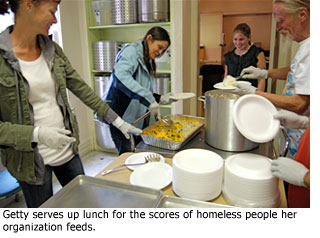 At the same time, Getty individually has funded other organizations—Step Up On Second, PATH and Housing Works—to help them develop permanent housing for residents who simultaneously receive such services as health and mental health care. This month, Getty’s efforts led to her being honored as “woman of the year” for Supervisor Zev Yaroslavsky’s Third District.
At the same time, Getty individually has funded other organizations—Step Up On Second, PATH and Housing Works—to help them develop permanent housing for residents who simultaneously receive such services as health and mental health care. This month, Getty’s efforts led to her being honored as “woman of the year” for Supervisor Zev Yaroslavsky’s Third District.
Underlying all of Getty’s financial and logistical contributions is her core belief in the power of one-on-one relationships to, in her words, “rekindle the part of a human being that wants to find its best self.”
“Just because we’re housed doesn’t mean our spirit is comfortable,” says Getty, whose organization has taken clients on outings to, among other places, the L.A. County fair and the horse track.
Beyond housing, Gettlove serves hundreds of breakfasts and lunches each week at a social services agency founded by Blessed Sacrament Church in Hollywood. Gettlove shares the Selma Avenue building with several other homeless advocacy organizations, a reflection of the growing coordination among non-profits, business owners and government agencies to reduce homelessness in Los Angeles’ most famous neighborhood. A 2009 count by the Los Angeles Homeless Services Authority found more than 1,000 individuals living on the streets of greater Hollywood, half of them young people.
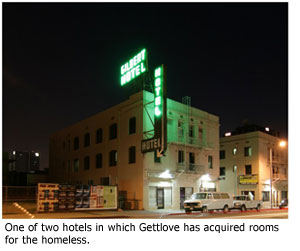 Getty can often be found at Blessed Sacrament’s social services facility spooning out food in the industrial-sized kitchen or mingling with clients in the dusty courtyard. Most have no clue about the family ties of the soft-spoken woman, who treats them as though they were her only family. But some have heard the buzz.
Getty can often be found at Blessed Sacrament’s social services facility spooning out food in the industrial-sized kitchen or mingling with clients in the dusty courtyard. Most have no clue about the family ties of the soft-spoken woman, who treats them as though they were her only family. But some have heard the buzz.
“I hear you’re one of the Gettys. Is that true?” they’ll ask. When Getty says yes, the matter quickly passes because her commitment to them has already become the defining characteristic of their relationship.
“The clients know me for what I do with them each day,” Getty says, “not what I give to them each day.”
That said, Getty also knows her wealth is central to Gettlove’s effectiveness, giving her an edge over traditional service groups that must be accountable to the agencies that fund them. “I’m not dependent on anyone else’s expectations,” she says.
This extraordinary financial freedom allows Gettlove to experiment, to learn what works and then collaborate with government agencies to bring to life these “best practices” models.
Says Getty’s longtime friend and fellow Gettlove board member, John Ladner: “We’re taking advantage of our inexperience. We have the advantage of not too many set-in-stone obstacles.”
Looking ahead, Getty believes that providing homes to the homeless should not be embraced as an end in itself. “Nothing is solved,” she says, “unless we nurture a sense of community.” To that end, she envisions the development of community centers, where the homeless and the newly housed can gather during the day and enjoy the restorative powers that come with companionship and “a true sense of belonging.”
Among other things, she says these centers would offer everything from movies to gardening. “Someplace where people get to laugh,” Getty says—something that, these days, comes much easier in her own life. Says Getty: “I’ve become a more comfortable human being.”
Posted 3/24/11
They count. Will you?
January 5, 2011

At last count, some 42,694 homeless men, women and children were struggling on the streets of Los Angeles County.
That last count was two years ago. The next count begins later this month, when cities and counties across the nation—Los Angeles among them—will take to the recession-wracked sidewalks, shelters, hospitals, jails and underpasses in a crucial, federally mandated effort to attach hard numbers to the vexing issue of homelessness.
To that end, the Los Angeles Homeless Services Authority, which conducts the biennial head count for the city and county, is looking for a few thousand sharp-eyed volunteers. Enumerators will be asked to donate five hours during the week nights of January 25-27, or during the morning of January 27, to fan out across the county in search of homeless people and help document their existence. Training and security will be provided; volunteers won’t interact with the homeless, just observe and tally.
“We need 4,000 people,” says LAHSA Communications Director Calvin J. Fortenberry, noting that the opportunity is open to any volunteer over 18.
“These counts are aimed at assessing the severity of the problem here and then moving people into housing. It’s a unique volunteer experience, one that goes beyond the usual clothing or food drive.”
The U.S. Department of Housing and Urban Development has required the count since 2005 as a condition for federal funding for homeless programs, despite the inherent difficulties in tracking people who, by definition, have no fixed address.
The challenge is particularly tough in Los Angeles County—a metropolis the size of Rhode Island and Delaware put together—but the data have offered one of the few sources of hard information on the issue, and the count has helped local authorities determine how best to allocate services for the homeless.
The 2009 count revealed, for instance, that two-thirds of the area’s homeless had no shelter, that about a quarter were mentally ill, that a third were women and that about one in six were veterans. It also confirmed that homelessness extends well beyond Skid Row to every corner of the county.
At the same time, however, it indicated that although the homeless population in Greater L.A. remains the nation’s largest, the problem appears to be shrinking. Volunteers counted 88,345 homeless people in 2005, but found only 68,808 in 2007 and just 42,694 in 2009—a drop of nearly 52% in four years even though the area was reeling from financial collapse and record foreclosures. Some of that drop, however, can be attributed to a shift in the count methodologies. In the first counts, the results relied mostly on extrapolations. More recently, there have been growing efforts to increase the accuracy of those numbers by conducting full counts–an effort requiring even more volunteers.
Some advocates for the homeless took issue, concerned both that the statistics were not reflecting the demand they were experiencing on the front lines, and that falling numbers might translate into diminished funding.
Fortenberry says all this just underscores the importance of the count in 2011.
“This is all the more reason to get involved,” he says. “We’re focusing on the need, and the need is more than 40,000 people with no permanent place to live.”
Interested in helping? Click here, or contact LAHSA at (213) 225-8433 or go to theycountwillyou.org.
A five-year plan to end homelessness
December 1, 2010
A growing number of business and political leaders in Los Angeles are rallying behind a plan that boldly promises to end chronic homelessness within five years—a plan that on Wednesday got an announced boost of $13 million from the Conrad N. Hilton Foundation.
The plan, Home For Good, calls for a sweeping reorientation of strategies and expenditures in Los Angeles County for the chronically homeless and military veterans living on the region’s streets. The goal is to provide permanent, rather than temporary, housing to these individuals, who would then immediately have access to a stream of health and mental health services to help them restore their lives.
At the same time, according to the plan, taxpayers would be saved millions of dollars now being spent by the criminal justice and emergency health care systems to cope with the county’s huge homeless population.
“We need to shift the paradigm away from a system that has been cumbersome and confusing to an efficient system focused on finding people homes,” states the report, a joint initiative of the United Way of Greater Los Angeles and the Los Angeles Area Chamber of Commerce.
This model, known as “permanent supportive housing,” has taken root in cities across the nation, including Los Angeles, where a program called Project 50 on Skid Row has shown dramatic results.
At an event on Wednesday to publicize the Home For Good action plan, a number of Los Angeles’ top officials were on hand, including Mayor Antonio Villaraigosa and Supervisor Zev Yaroslavsky, who initiated Project 50 and has backed its replication throughout his district and beyond.
During his remarks at the gathering, Yaroslavsky said that Home For Good “sets the record straight” that permanent supportive housing is the most effective approach to helping individuals who’ve been identified as the most likely to die on the streets.
Once these people are in a home—and a trusting relationship has been established—“we can open their minds and their hearts to the treatment they need, the services they need, so they can function in our society,” Yaroslavsky said. “In order to end homelessness, we’ve got to provide a home.”
Yaroslavsky’s comments were indirectly aimed at critics of the housing first approach, who argue that homeless individuals should not be given publicly supported residences unless they’re first receiving mental health care and substance abuse treatment.
That is not, however, the prevailing attitude among the unprecedented coalition of elected officials, business leaders, philanthropists, religious leaders and housing advocates who’ve endorsed the United Way/Chamber of Commerce initiative.
Permanent supportive housing also is the favored approach of the Obama Administration, as was made clear on Wednesday by Barbara Poppe, executive director of the U.S Interagency Council on Homelessness. She said the Home For Good blueprint could open the door to more federal funding. “It’s not enough to plan,” she said. “It’s only enough if we act.”
Los Angeles County Supervisor Mark Ridley-Thomas agreed, saying: “We must turn Home For Good into action. Measurable results, in the final analysis, is what matters.”
To help ensure that action, Steven M. Hilton announced that the Hilton Foundation would provide $13 million in grants, spread across three years, to fund key components of the campaign. The approach advocated by Home for Good “restores stability, autonomy and dignity and helps the individual integrate back into the community,” said Hilton, president and CEO of the foundation.
Hilton said that $9 million of grants will be given to the Corporation for Supportive Housing to spur the creation of 2,500 new permanent supportive housing units; $3.6 million will be used to identify and house 4,500 of the most vulnerable people on the streets. The rest will be distributed to other non-profit and faith-based efforts on behalf of the chronically homeless.
He called Los Angeles’ homeless problem “shameful,” and said that the homeless man on the street is “somebody’s son, father, brother. In effect, they’re one of us.”
Posted 12/1/10
Making a move on homeless at the Bowl
November 11, 2010
 Living in the hillside houses and condos above the Hollywood Bowl has long offered a taste of the rustic in the midst of the bustling city. For years, it’s also brought with it a stark urban reality: sharing the neighborhood with an encampment of homeless people.
Living in the hillside houses and condos above the Hollywood Bowl has long offered a taste of the rustic in the midst of the bustling city. For years, it’s also brought with it a stark urban reality: sharing the neighborhood with an encampment of homeless people.
Residents had long complained about crime problems and fire hazards associated with the impoverished community. “I know one of them came and jumped in our hot tub once,” said condo-dweller Jerry Shandy.
The Sheriff’s Department, which last year assumed policing responsibilities from county’s the Office of Public Safety, recently had its Parks Bureau set up shop at the county-owned Bowl, with a mandate to resolve the situation in a way that would help the homeowners as well as the homeless.
Sheriff’s Capt. Stephen Smith called in the department’s special problems team, which confronts crime and quality of life concerns in and around county parks. In addition to figuring out the logistics of shutting down the camp, the team created a plan to provide food, clothing and offers of shelter for the displaced.
 Deputy Jason Elkins, a 10-year sheriff’s veteran, twice walked the hillside and notified the homeless that, in the coming weeks, the area would be cleared. The Mountains Recreation and Conservation Authority, which manages the public land where the homeless had taken up residence, was brought on board, along with the county Department of Mental Health, Caltrans, the CHP, the Los Angeles City Fire Department and the nonprofit organization PATH (People Assisting the Homeless), among others.
Deputy Jason Elkins, a 10-year sheriff’s veteran, twice walked the hillside and notified the homeless that, in the coming weeks, the area would be cleared. The Mountains Recreation and Conservation Authority, which manages the public land where the homeless had taken up residence, was brought on board, along with the county Department of Mental Health, Caltrans, the CHP, the Los Angeles City Fire Department and the nonprofit organization PATH (People Assisting the Homeless), among others.
The effort was given a name that stressed its mission: “Hollywood Bowl Homeless Outreach Project”
“We didn’t want to leave anyone displaced,” Elkins said.
The operation began on October 27, with the team making its way up hillsides so steep that the homeless had created rope pulls to make the climb easier. Authorities had expected to encounter 30 homeless people but found that many, including one who’d been there for a decade, had left as a likely result of the notifications.
 Of the 14 who remained, ten accepted emergency shelter and the others voluntarily left, sheriff’s officials said.
Of the 14 who remained, ten accepted emergency shelter and the others voluntarily left, sheriff’s officials said.
Caltrans workers filled four trucks with the remains of the dismantled campsites. Follow-up work to remove overgrown vegetation took place Wednesday.
“From our perspective, unfortunately, we have to deal with these kinds of things quite a bit,” said Dash Stolarz of the Mountains Recreation and Conservation Authority, which now is working to restore the property and prevent new encampments. “It’s just a constant battle to make sure the parklands are safe.”
On Tuesday, Elkins and another team member, Deputy Nisha Sehdev, went back through the neighborhood Tuesday, talking to appreciative residents about the operation. One of them, Jack Calnan, spoke for the many when he said, “We really appreciate you being on top of it.”
Picturing a homeless woman’s world
August 25, 2010
It’s been nearly 18 months since nine homeless women picked up cameras and set out to tell the stories of their world.
From Santa Monica to Skid Row, the women captured striking images: A street-weathered face against a backdrop of palm trees. Haunting yet hopeful interiors decorated with stuffed toys. A Ferris wheel turning under a blue sky as a hand grips a cigarette in the foreground.
The project, under the auspices of Venice Arts in collaboration with the Ocean Park Community Center, came to be called “Got Caught Up Out There.” (See gallery of selected photographs below.)
For some of the women, the experience was transformative. Two have enrolled in Santa Monica College. Among the others, there’s been a reunion with a long-lost friend, a volunteer job, a relocation to Hawaii.
One of the college students, Althea Anderson, is pursuing a career in photojournalism. The other, Rita Elzy, aspires to a master’s degree in fine arts. “My vision is to work with the special needs population,” says Elzy, 57, who at one time was sleeping in a car in Beverly Hills.
“It was fabulous,” she says of the experience. “We were working with professional people. The equipment we used was state of the art. It was just a great way to tell a story.”
Like Elzy, all but two of the women are now in apartments or other housing and receiving services.
Even those who’ve drifted away took something meaningful from the 10-week photo workshop, says Amy Turk, project director of OPCC’S Daybreak program for homeless women with long-term mental illness. “I think it was maybe one of the most professional opportunities they had had for a while.”
Photojournalist Jim Hubbard, creative director at Venice Arts, ran the program with photographers Giselle Macfarlane and Maya Myers. The project received funding from the county Arts Commission.
Hubbard called the participants “an incredible group of women” who brought depth and humor to their work. “Instead of being depressing,” he says, “this was one of the most entertaining projects I’ve ever worked on.”
The women’s photos, which can be viewed online, have been featured at the Venice Arts Gallery and the Sam Francis Gallery at Crossroads School. They also were showcased in a limited edition book that includes quotes from some of the women, including Althea Anderson, who says: “I feel like I got my self-esteem back.”
Posted 8/25/10
The photographers




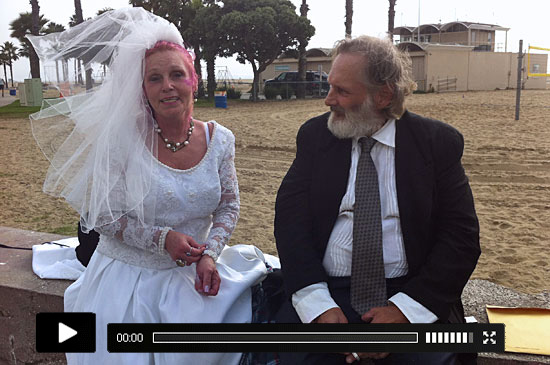
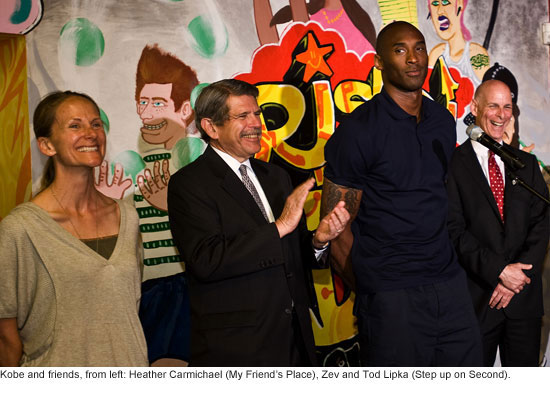
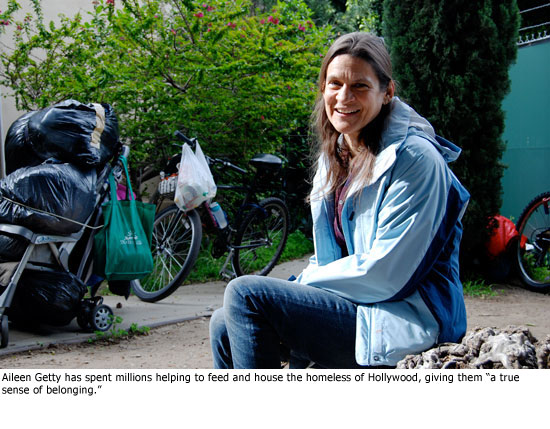
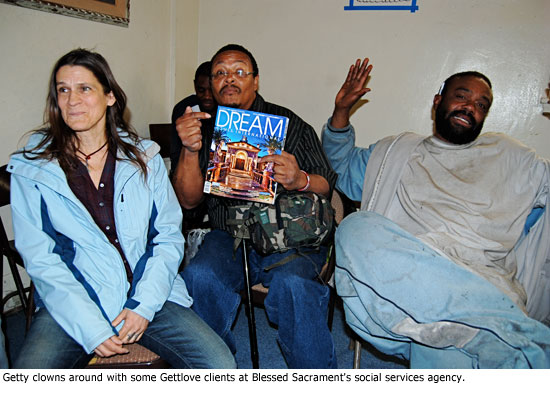
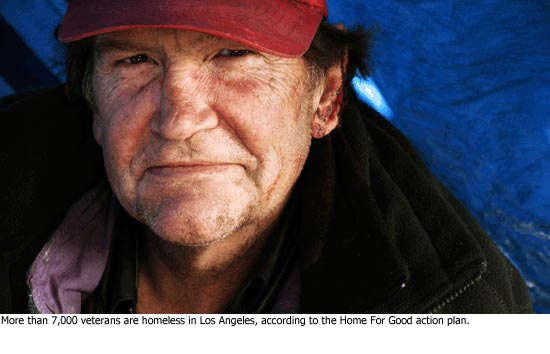
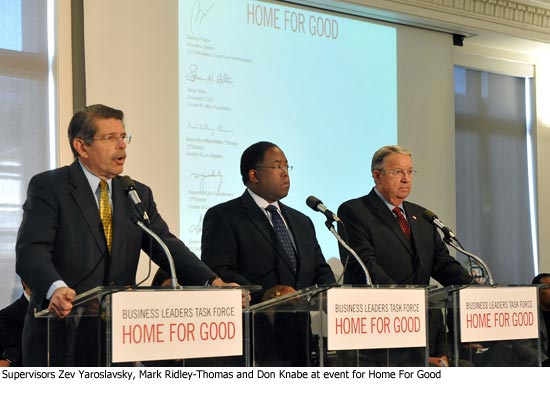
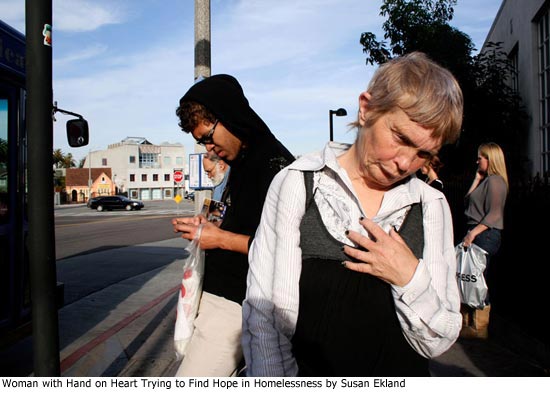































 405 bridge work causes a stink
405 bridge work causes a stink

